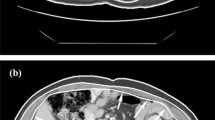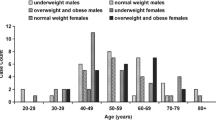Abstract
In recent years, the number of obese population in Korea has been growing up along with the economic development, environmental factors, and the change in life style. Considering the growth of obese population and the adverse effect of obesity on health, it is getting more important to prevent and diagnose the obesity with the quantitative measurement of body fat that has become an important indicator for obesity. In this study, we proposed a procedure for the automated fat assessment from computed tomography (CT) data using image processing technique. The proposed method was applied to a single-CT image as well as CT-volume data, and results were correlated to those of dual-energy X-ray absorptiometry (DEXA) that is known as the reliable method for evaluating body fat. Using single-CT images, correlation coefficients between DEXA and the automated assessment and DEXA and the manual assessment were 0.038 and 0.058, respectively (P > 0.05). Hence, there was no significant correlation between three methods using the proposed method with single-CT images. On the other hand, in case of CT-volume data, the above correlation coefficients were increased to 0.826, 0.812, and 0.805, respectively (P < 0.01). Thus, DEXA and the proposed methods with CT-volume data showed highly significant correlation with each other. The results suggest that the proposed automated assessment using CT-volume data is a reliable method for the evaluation of body fat. It is expected that the clinical application of the proposed procedure will be helpful to reduce the time for the quantitative evaluation of patient’s body fat.





Similar content being viewed by others
References
Ogden CL, Carroll MD: “Prevalence of overweight, obesity, and extreme obesity among adults: United States, Trends 1960–1962 Through 2007–2008,” 2010
Shin SW, et al: The correlation between simple anthropometric indices and abdominal visceral fat accumulation by computed tomography. Korean Acad Fam Med 22:316–323, 2001
Kim TKH, Lim SW: A study on the equation for estimating body fat using the body girth. Korea J Sports Sci 8:439–446, 1999
Yom SKHW, Whang IT, Hong YM: Correlation between body fat percent estimated by bioelectrical impedance analysis and other variable methods. Korean J Pediatr 46:751–757, 2003
Jung DW, et al: Measuring performance evaluation of body fat measuring instrument applying body measuring value method. Korean J Health Promot Dis Prev 6:79–87, 2006
Kim JS, et al: Comparison of DEXA and CT for truncal obesity in adult women related to metabolic complications. Korean J Fam Med 28:675–681, 2007
Despres JP, et al: Abdominal obesity and the metabolic syndrome: contribution to global cardiometabolic risk. Arterioscler Thromb Vasc Biol 28:1039–1049, 2008
Bandekar AN, et al: “Performance evaluation of abdominal fat burden quantification in CT.” Engineering in Medicine and Biology Society, 2005. IEEE-EMBS 2005. 27th Annual International Conference of the, 2005, pp. 3280–3283
Bandekar AN et al: “Automated pericardial fat quantification in CT data,” Engineering in Medicine and Biology Society, 2006. EMBS '06. 28th Annual International Conference of the IEEE, 2006, pp. 932–935
Liou T, et al: Fully automated large-scale assessment of visceral and subcutaneous abdominal adipose tissue by magnetic resonance imaging. Int J Obes 30:844–852, 2006
Pednekar A, et al: “Automatic segmentation of abdominal fat from CT data.” In: Application of Computer Vision, 2005. WACV/MOTIONS '05 Volume 1. Seventh IEEE Workshops on, 2005, pp. 308–315
Romero D, et al: “Quantification of subcutaneous and visceral adipose tissue using CT.” In: Medical Measurement and Applications, 2006. MeMea 2006. IEEE International Workshop on, 2006, pp. 128–133
Zhao B, et al: Automated quantification of body fat distribution on volumetric computed tomography. J Comput Assist Tomogr 30:777, 2006
Kim SH, et al: "Body fat thresholds in computed tomography image processing." Korean Information Science Society, 1998. 25th Fall Conference of the, 1998, pp. 438–440
Kvist H, et al: Total and visceral adipose-tissue volumes derived from measurements with computed tomography in adult men and women: predictive equations. Am J Clin Nutr 48:1351, 1988
Yoshizumi T, et al: Abdominal fat: standardized technique for measurement at CT1. Radiology 211:283, 1999
Acknowledgment
This research was supported by the Bio & Medical Technology Development Program of the National Research Foundation (NRF) funded by the Korean government (MEST) (2011–0019794) and National Cancer Center No. NCC-1110160.
Author information
Authors and Affiliations
Corresponding author
Rights and permissions
About this article
Cite this article
Kim, Y.J., Lee, S.H., Kim, T.Y. et al. Body Fat Assessment Method Using CT Images with Separation Mask Algorithm. J Digit Imaging 26, 155–162 (2013). https://doi.org/10.1007/s10278-012-9488-0
Published:
Issue Date:
DOI: https://doi.org/10.1007/s10278-012-9488-0




